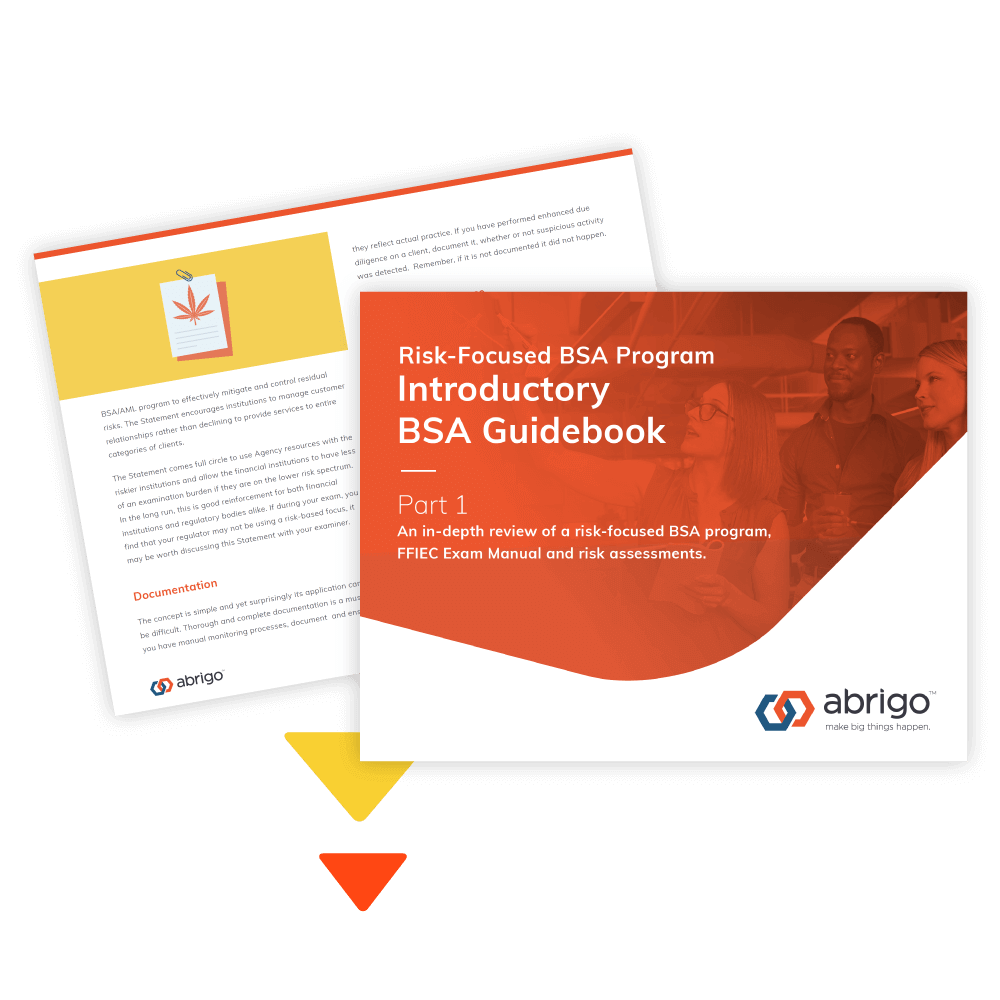Having a risk-based focus as a foundation to your BSA compliance program is the biggest step in driving past competency towards excellence. This guidebook gives you steps to follow while managing, maintaining, and enhancing your BSA/AML program.
BSA Compliance
Establish a Risk-Based Approach
Maintaining a BSA compliance program is time consuming. This guidebook gives you key focuses for your BSA compliance training.
Contents of this guidebook include:
- Hot topics to expect during your next BSA exam
- BSA/AML risk assessment best practices
- Common exam findings related to Suspicious Activity Reports, CDD, and OFAC
- Key things regulators want to see in your BSA/AML compliance program

A comprehensive guide to building a sound BSA compliance program.
Exam Preparation
Data from recent regulatory activity.
Preparing for an exam can be daunting, but knowing where to start is a key to gaining some momentum.
Risk-Focused BSA
Understand the true risk of your customer base.
Develop and implement effective processes to identify, measure, monitor, and control risks at your financial institution.
5 BSA Pillars
The required foundation from the FFIEC for regulatory competency.
Review the essentials you must include in your BSA/AML program, including important exam manual updates.
Risk Assessment
Starting points for developing mitigating controls.
Key things to consider when preparing for an exam, based off data from recent regulatory activity.

BSA Compliance Training Guide
BSA compliance programs are not “one size fits all” and BSA compliance must be right-sized to fit each institution and its evolving risk.
USE THIS GUIDE TO LEARN HOW TO:
- Establish a culture of BSA/AML compliance
- Get key steps for risk assessment
- Ensure BSA compliance program sustainability
- Know the 5 pillars of BSA compliance
- Keep an eye on future threats and their potential impact